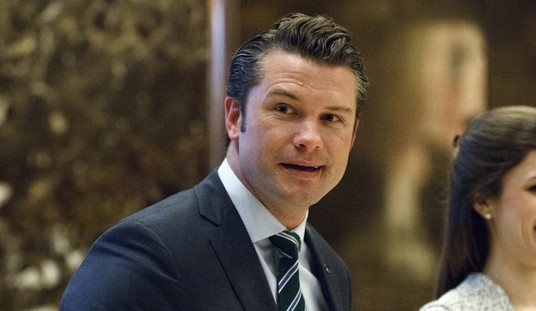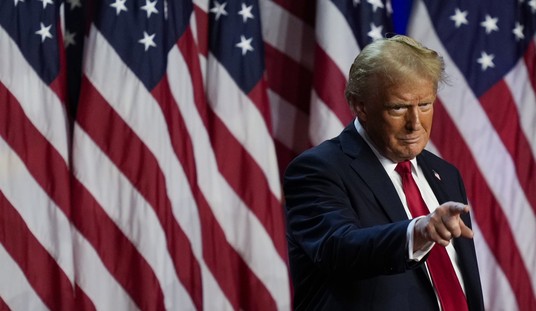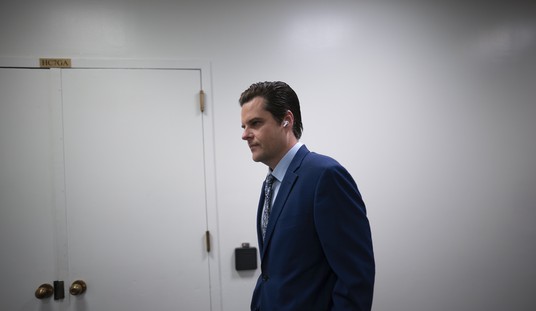Ordinarily, the news that a long overdue memorial to an historic American leader has been put on hold still again would come as a disappointment. But if you've seen the innocuous design for an Eisenhower memorial in the nation's capitol, the news may come as a relief -- and a welcome opportunity to start all over and try to get it right this time.
Innocuous doesn't begin to cover the emptiness, the blahness, the pomp meaninglessness of Frank Gehry's design for this "monument" that is the opposite of monumental. It's just a few saplings around what looks like an empty neighborhood playground in any interchangeable midwestern suburb circa the 1960s. A cross between a no-place, to borrow Walker Percy's perfect phrase for so much of America's forgettable urban landscape, and the non-style dubbed the International Style -- an enclosed blankness.
Oh, yes, there are a few disjointed quotations from the real Eisenhower clunked onto the design like random afterthoughts to lend it a bogus authenticity, and a statue of the accomplished general, under-estimated statesman and smiling national leader as ... a Kansas farm boy.
I'd call the design Disneyish except that it lacks even that much character. Believe it or not, this disconnected, spaced-out blob of a little park is supposed to have something to do with honoring an American who was first in war, first in peace and first in the hearts of his countrymen in his time. Which was the 1950s, the Age of Cool, when understatement was in fashion, displays of emotion were out, and political rhetoric was supposed to be as slim as the neckties.
But this design for an Eisenhower "memorial" betrays no memory of either the Supreme Allied Commander in the European Theater or the president who ended another war, the forgotten one in Korea, and kept a Cold War from getting hot. And who had the good sense not to get in the way of an American economic revival that would jump-start the world's after the Second World Devastation.
Recommended
Where is that Eisenhower in what is supposed to be an Eisenhower memorial? Where is the Ike we remember? There's not a trace of him.
Here was a general who could get prima donnas like Patton and Monty and DeGaulle working together, using their talents just when and where they were most needed and not otherwise. Then he would come home to reunify a bitterly divided country and deal with the Joe McCarthys and Orval Faubuses and J. William Fulbrights so deftly and effectively it looked as if he were doing nothing at all.
Ike knew when to let actions speak louder than words. As on June 6, 1944, aka D-Day. And on September 25, 1957, when the 101st Airborne appeared again, this time at Central High School in Little Rock, Ark., and in American history. Ike also knew when and how to say absolutely nothing at length, and let there be peace. In that sense, he was a worthy successor to American soldier-statesmen in the mold of U.S. Grant and George Marshall.
Murray Kempton, a now almost forgotten newspaper columnist of the Eisenhower Era, wrote exquisite prose that revealed a fine, discriminating mind. (Yes, even if he was a newspaper columnist, hard as that is to believe in these post-William F. Buckley days.) And when Ike's critics called the old general inarticulate, Kempton couldn't resist pointing out that he was "inarticulate like a fox."
There was something irresistibly simple about both Eisenhower the general and Eisenhower the president. Or maybe he just appeared simple, a much more valuable political talent. It disarmed even his critics. He could boil down both strategic and political issues to their core, reach a conclusion, and then stick with it. How rare in the fickle world of high-stakes, ever-fluid politics. Call it constancy of purpose.
Unlike today's headliners, the man had an instinctive aversion to the pretentious, the glib, the clever, the theatical. No one would ever have mistaken him for some kind of flashy intellectual. It was said that when his speechwriter gave Ike a first draft, the first thing he did was go through it and strike out any phrases that might prove memorable. It's a wonder Emmet Hughes' warning about the dangers presented by a growing "military-industrial complex" survived his boss' editing; it may be the one quotable phrase Ike ever committed in a presidential address. Then there was that broad, trademark grin of his, which almost guaranteed that everybody would like Ike. And, more important, trust him.
Eisenhower does present a difficult question for historians: Was he better at cutting straight through some Gordian Knot, as in his panic-free response when the Germans broke through the Bulge in Allied lines? Or at defusing crises as the post-war leader of the free world? One who led so unnoticeably in his avuncular way that no one seemed to notice he had avoided World War III. There's no hint of any of that in this memorial without a memory.
This amnesiac memorial is the product of Frank Gehry, who has uglified the world's urban landscape from Bilbao to Seattle with designs that look like botched abdominal operations, what with their dissected intestines and tubes twisting in every direction. Something out of a surgeon's recurring nightmare. At least now he's produced something completely unmemorable, which for him is a step up.
Now the Great Gehry has designed a "monument" that doesn't have enough character even to be ugly. It could be one of those mass-produced, pre-fabbed Edward Durrell Stone designs of the 1960s with screens to mask its nothingness. This design for an Eisenhower "memorial" perpetuates and magnifies the essential mistake of the FDR memorial, a collection of politically correct effigies of Franklin D. Roosevelt at different stages of his life. A kind of park full of big dolls for us little people to wander around in. Unlike the great monuments -- the Lincoln Memorial, the Jefferson Memorial, the Washington Monument -- today's mod memorials diffuse the viewer's attention rather than focusing it.
The best of recent memorials -- Maya Lin's perfect Vietnam War memorial -- transcends the bitter divisions over that terrible sacrifice of lives, and unites us all in common sorrow, reverence, and gratitude for these honored dead. Yet even that work of art and memory had to be cluttered at the edges with some needless statuary and a little flagpole or two.
There is no design so simple and moving that some unimaginative, literal-minded critics won't find a way to disimprove it. Usually by adding completely superfluous curlicues. Or maybe a group of realistic sculptures to break up its abstract flow. At the Vietnam Memorial, tens of thousands of light-filled American names float forever on its sloping walls, whose dark surface reflects the images of the living who are just passing through like so many ghosts-to-be.
At least there's no way to disimprove this design for an Eisenhower memorial. Because there's nothing there to make better or worse. It's in the spirit of a spiritless age. And of an America that has grown suspicious of greatness or any national celebration of it. No wonder the Eisenhower family objected to this empty but expensive design, which is cluttered with symbols and at the same time manages to say nothing, nothing at all.
The major-domo of this whole, mishandled project is one Rocco Siciliano, a minor functionary in the Eisenhower White House who now is chairman of the commission in charge of planning this memorial. A fine Italian hand is the last thing one would associate with him; he's more a blunt instrument personified. Dismissing any objections from the Eisenhower family or anybody else, Mr. Siciliano announced: "I am one person who feels competent to say that he believes President Eisenhower would be most pleased as to what the present commissioners have unanimously accepted."
Goodness. It was clear enough that Chairman Siciliano was an insufferable little popinjay, but not that he was also in contact with the spirit world. Ike's son, Major John Eisenhower, could only describe himself as "astonished" at Mr. Siciliano's fatuous claim. But anyone familiar with both the pretension of bureaucrats and how little basis there is for it can't have been surprised, let alone astonished. The smaller and sillier the man, the bigger and stranger his claims. The commission in charge of the Eisenhower memorial seems to have found in its chairman the perfect un-Eisenhower.

























Join the conversation as a VIP Member